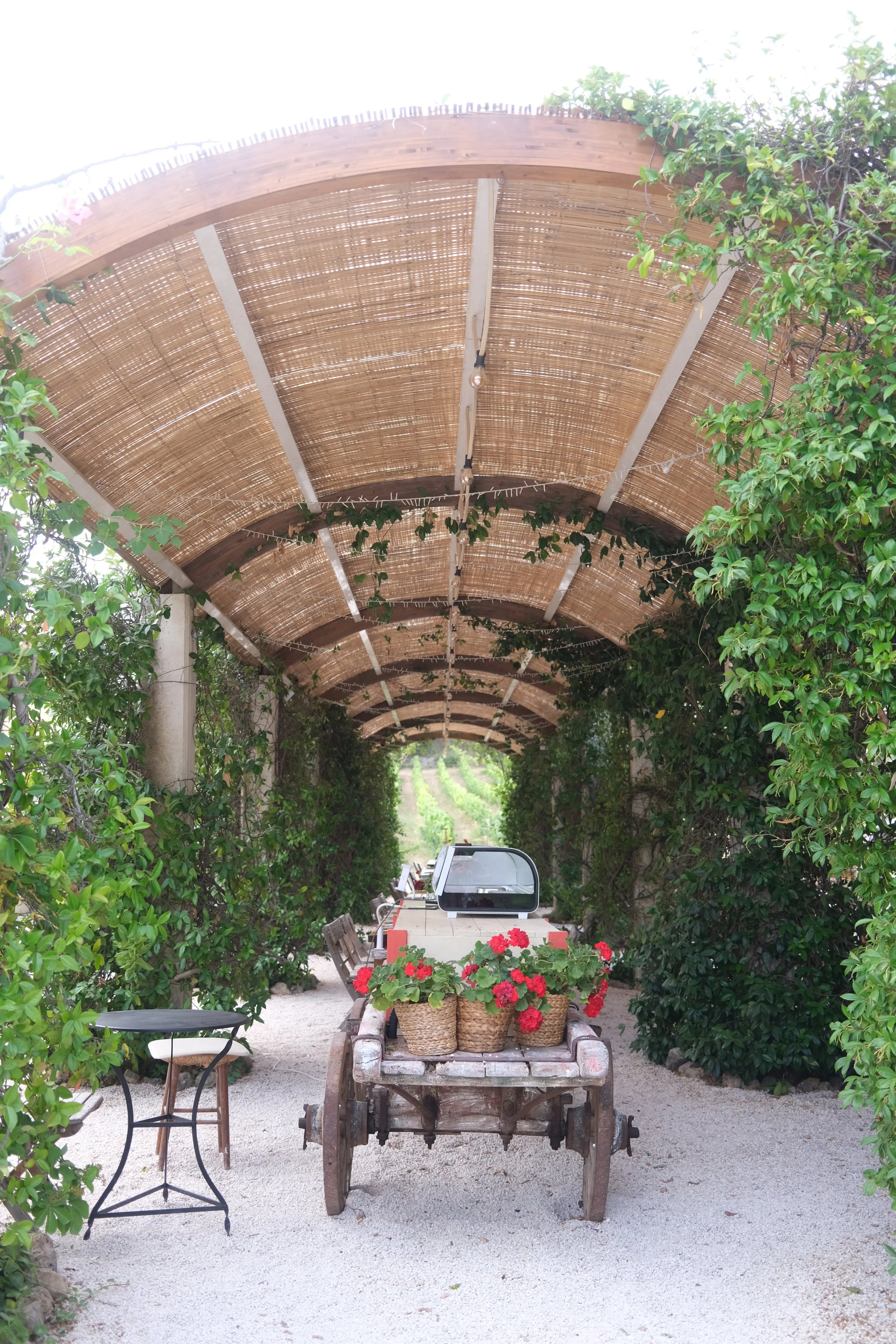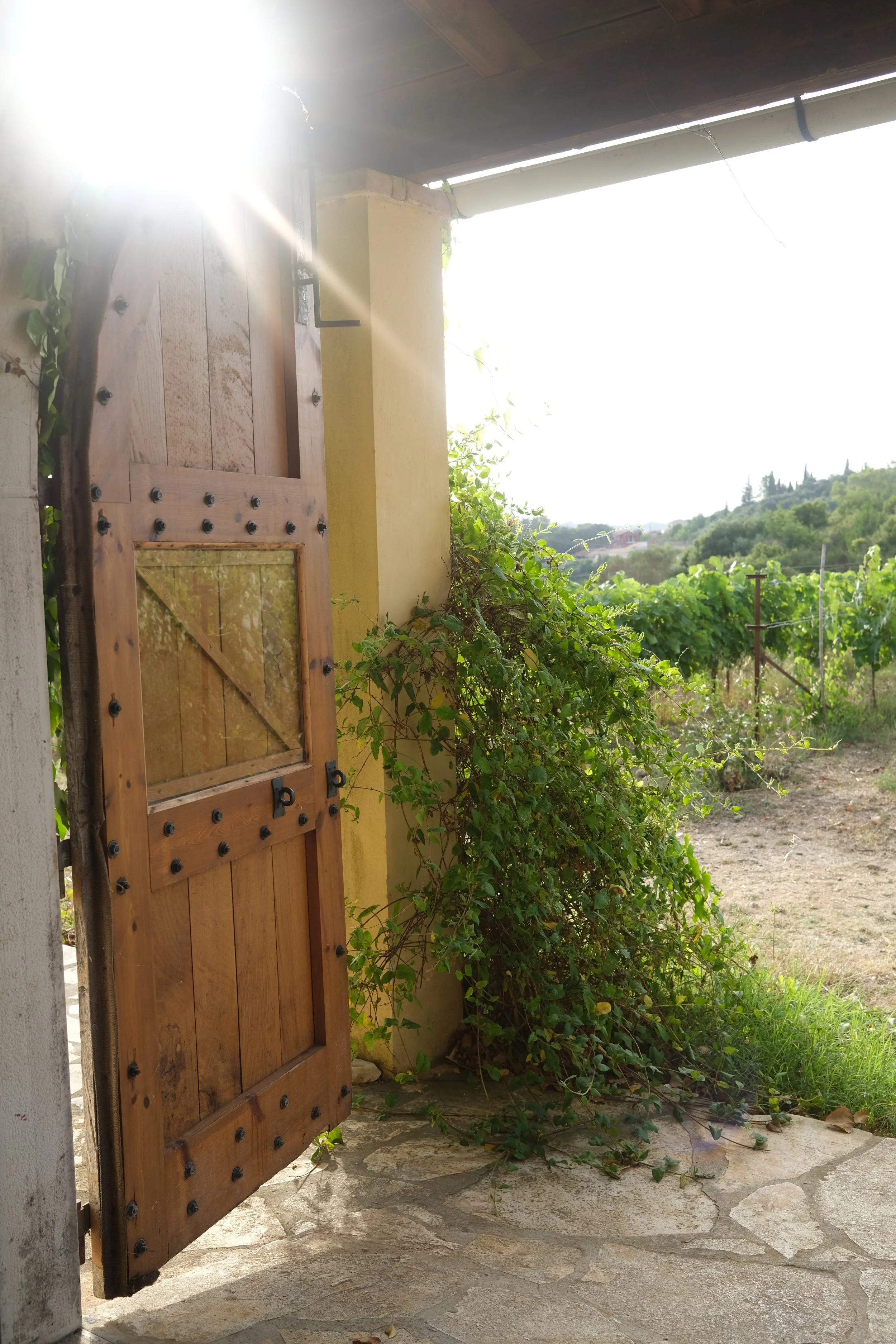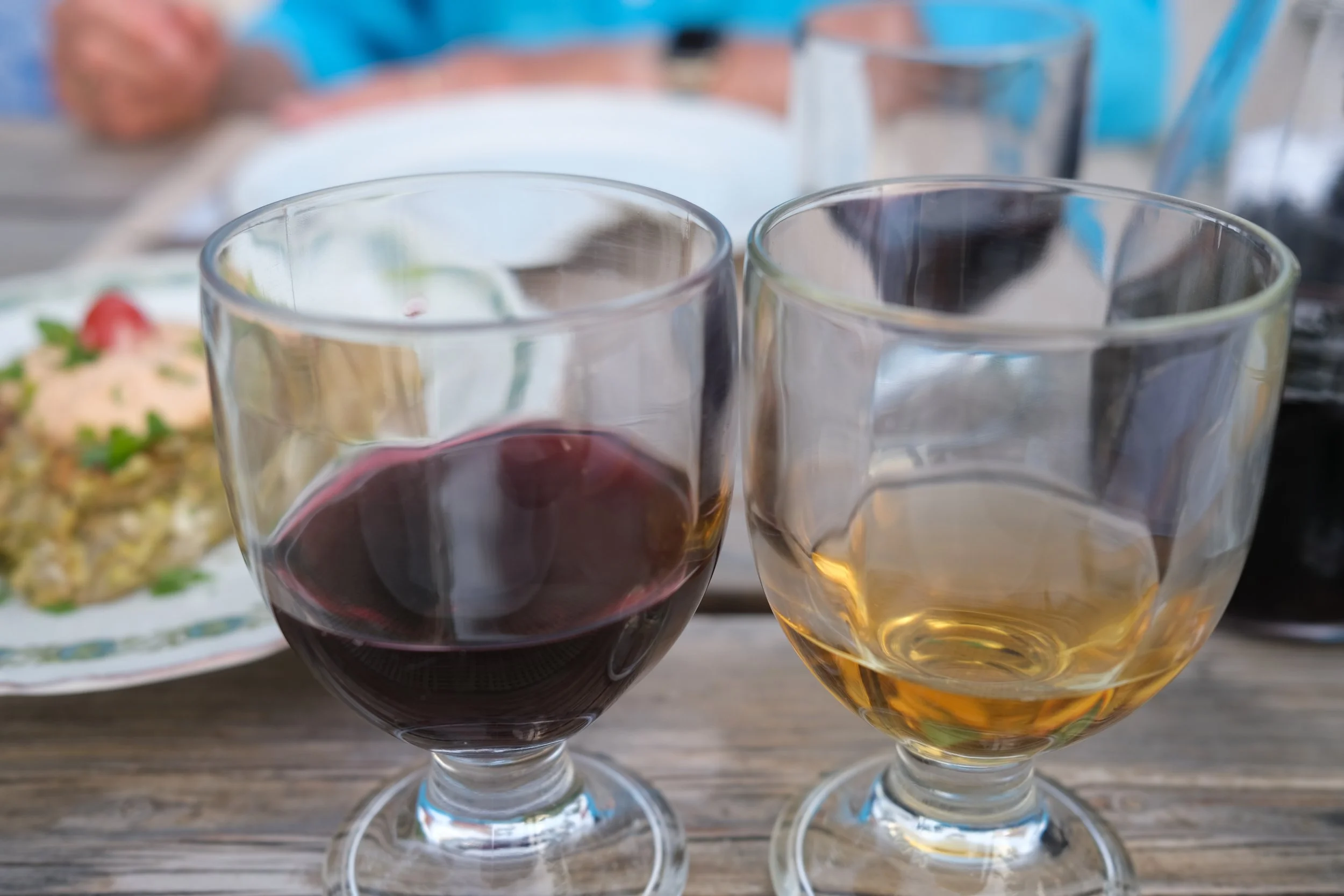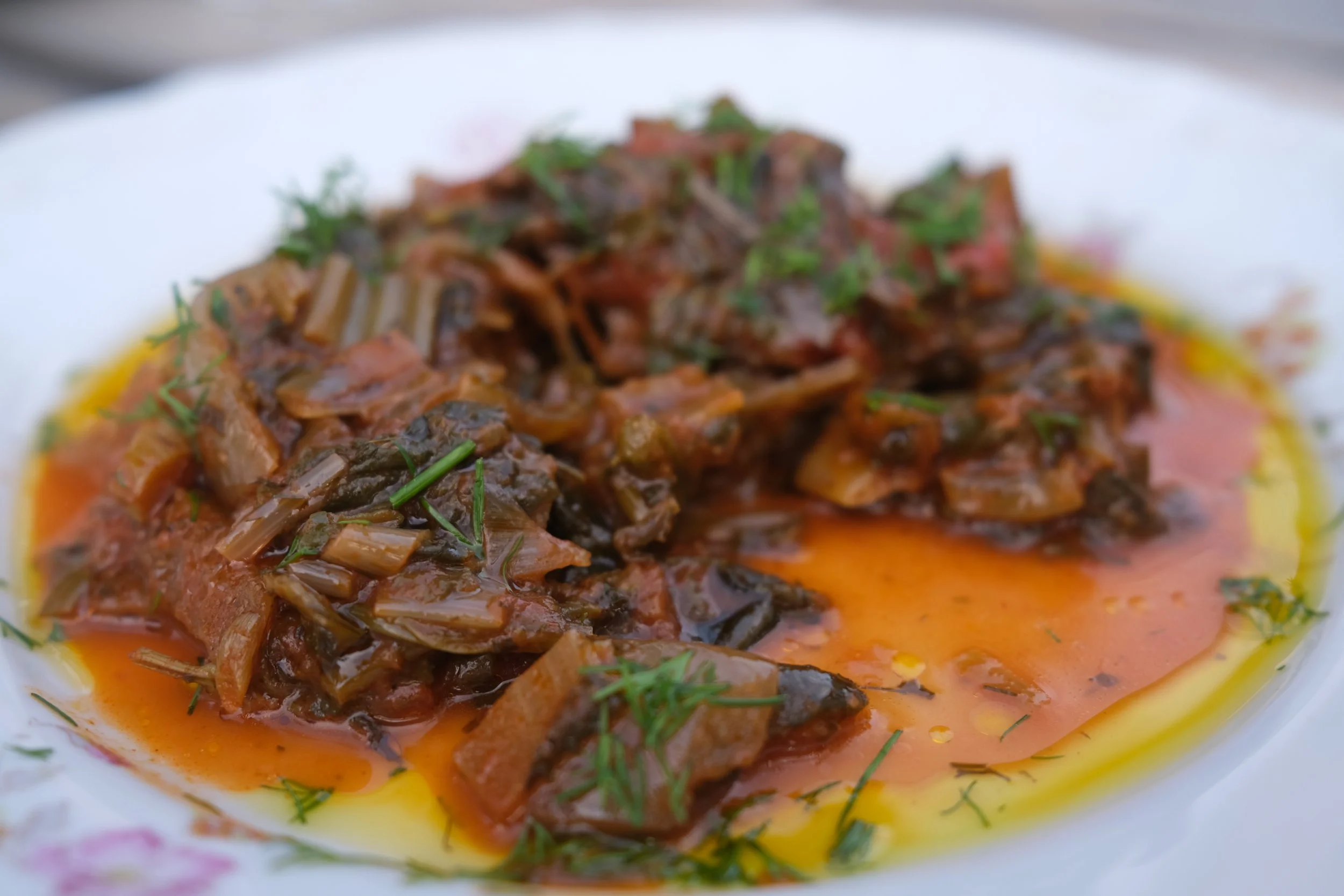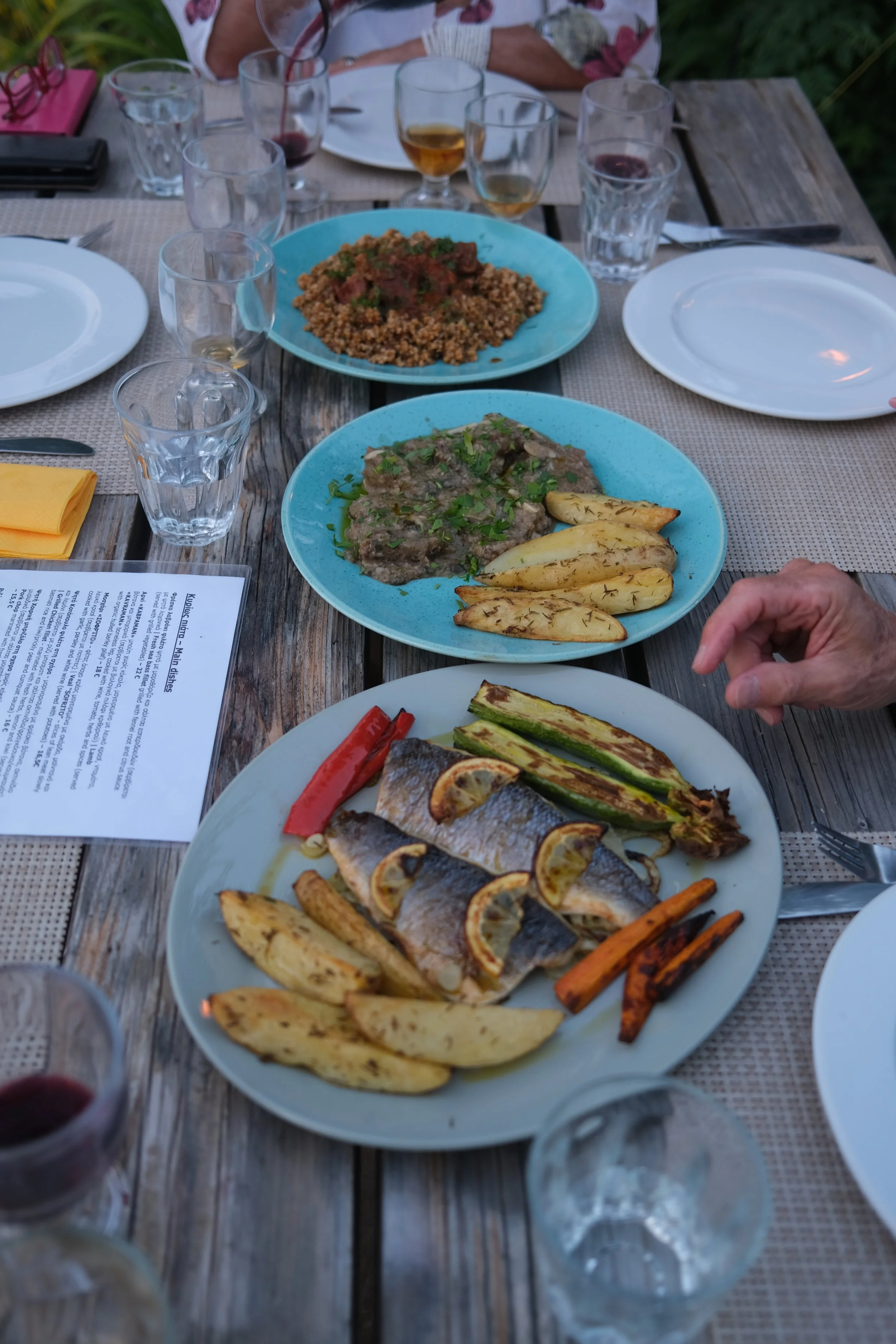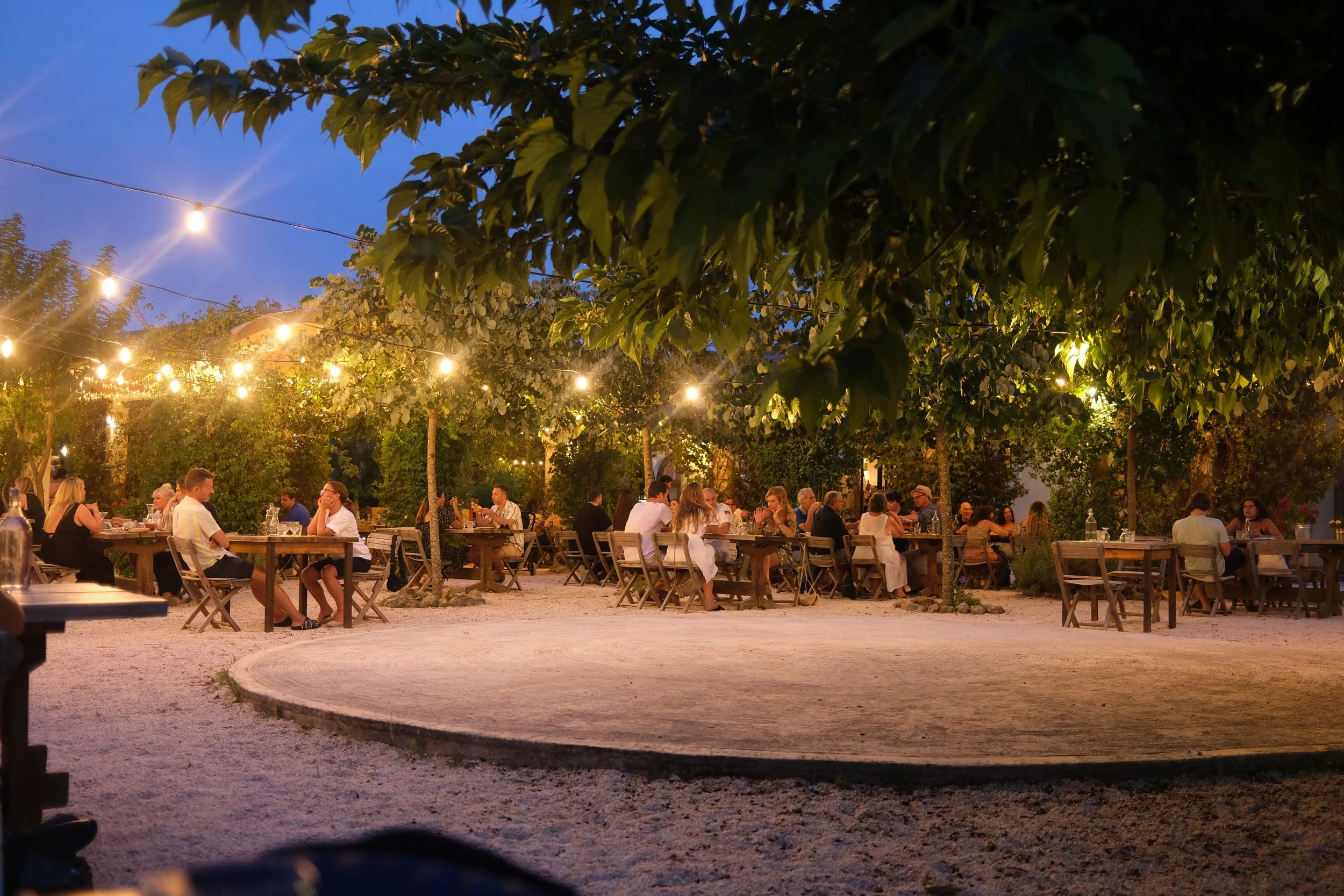“The flavours were such that, had I been dining in a Michelin starred restaurant, they would not have been out of place”
Ambelonas, Corfu
‘Wine is bottled poetry’, so said Robert Louis Stevenson. And as we quaffed our fermented grape juice relieving sunset-tinted glasses of their exceedingly potable cargo, and as we relaxed next to green vines turned golden in the dusk light, whilst lining our stomachs with the most incredible spice-infused delicacies, I became rather inclined to agree with him. In fact, we should have toasted him. Saying that, ‘Ambelonas’, the Greek for vineyard, may not be the most innovative or poetic of names, but this is emblematic of the rustic modesty this enchanting place bestows… plus, the word does rather enjoyably role off the tongue. With its modest size (it extends just over 2ha/ 5 acres), the vineyard rows providing a backdrop to the al fresco dining area, hints of its history peeping around every leaf, and the local dishes representing both the place’s history and copious spice options, Ambelonas gives a truly unique, inspiring yet comforting feel. Despite the great number of occasions we frequent Corfu, we had yet to discover Ambelonas until this summer when we organised a wine tour with accompanying appetizers, followed by dinner.
Thanks to Marco Polo, the Venetians’ control of the island during the Ottoman Empire, and Corfu’s central location as a major port hub between Europe and the Middle-East, unusual and exotic spices made their way into Corfiot dishes differentiating them from traditional Greek. As Vasiliki Karounou, the master behind Ambelonas, states in her book: ‘Mediterranean cuisine is not a pyramid; it is a mosaic, a multicoloured, asymmetric mosaic which is constantly reinventing itself.’ Ambelonas is one of the few places I have encountered to make full use of these imported powdery gems. The physical journey to Ambelonas from Corfu town is less than inspiring but the treat waiting at the end is certainly worth the internal confusion.
Seated at rustic wooden tables, trees and vine wrapped arches provide a partial canopy and are numerous enough to give the impression of privacy between tables. Our neighbouring mulberry tree provided, rather embarrassingly, my first sight of the real article. In the lowering Corfiot sun, post-wine tour and anticipating the flavour of our first wine, this was not the occasion I expected ‘here we go round the mulberry bush’ to chime in my ears, resurrected from a bygone echoic memory. But such is the feeling of relaxation here, it is hardly surprising.
The first wine poured for us was a light orange colour, its aroma, although weak, tinged with honey. Incomparable to a pinot, sauvignon or chardonnay, this was unique. But, whilst appreciating this innovation, it was the appetizers which were the real surprise here.
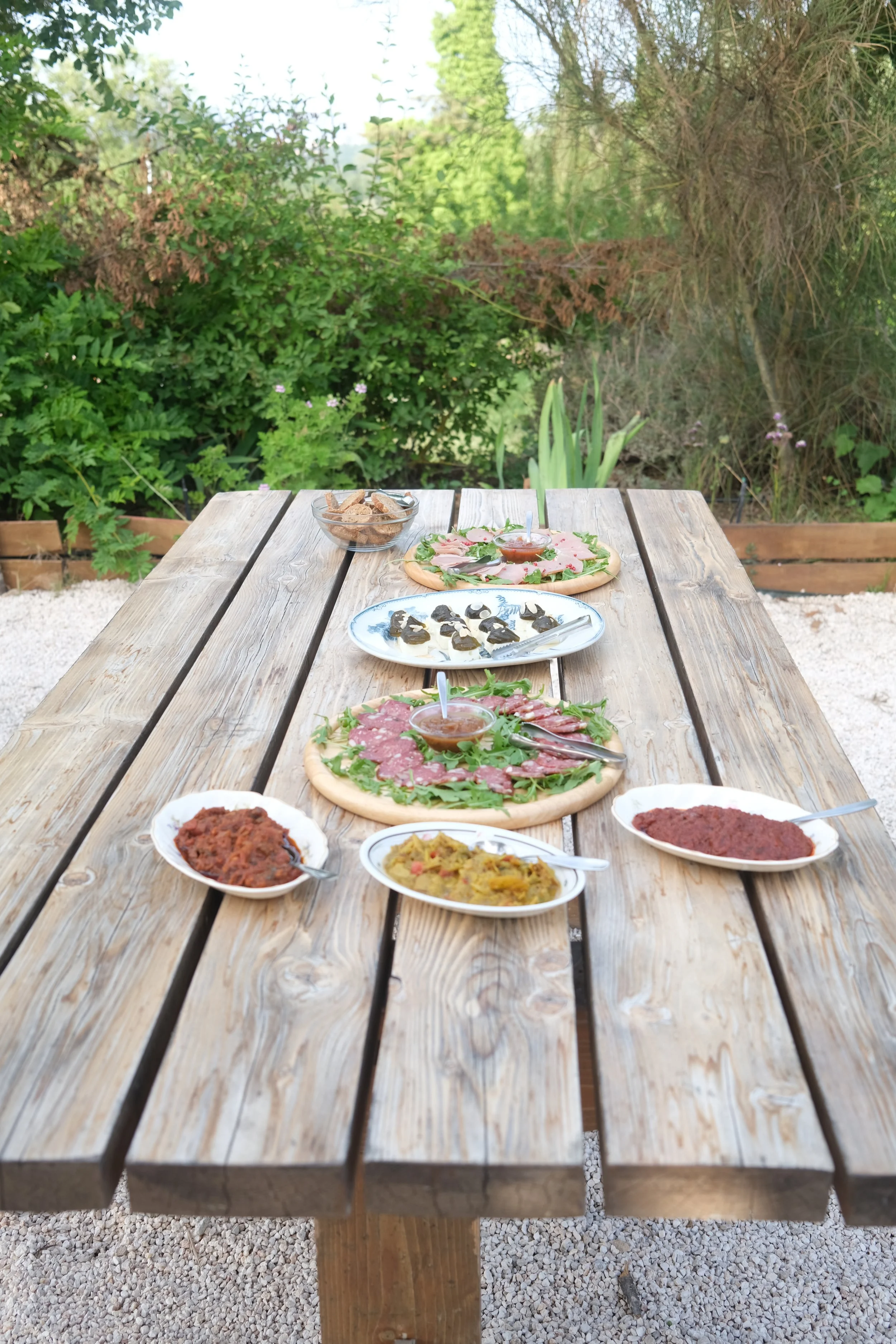



The spiced artichoke dip resembled kimchi. There was a nabula charcuterie dish, atopped with rocket and pink peppercorns. The tomato dip was a rich paste, completely tomato with chilli for added heat, similar to a spicier version of the paste you might spread over a pizza base. Each dish making use of their Middle-Eastern influences. The type of olives presented to us, small and with little flesh encasing the stone, are normally those pressed for oil and as such taste very different to their larger more succulent counterparts. I’ve often wondered how they must taste, how olivey they would be, and the answer is, they rather distinctly taste of pure olive oil! Although, the red variety taste mildly more of olive than oil. The figs, much like the olives, were a variety generally not eaten naked, and these had been preserved in a particularly pleasing syrup (the Greeks like a syrup!). The fig adorned crumbly goats’ cheese, and upon the fig, almond slices: the perfect trio of textures to entertain the mouth. The fig, when pressed with cutlery, exuded its sugary liquid which drizzled onto the cheese below- the mere sight awakening the salvia glands! The salami, the final taster dish, lay amongst a rocket bed, with a spicy raisin dip. The flavours were such that, had I been dining in a Michelin starred restaurant, they would not have been out of place. The spices, although containing quite some heat, did not linger unpleasantly in the mouth, quickly making way for the next flavour, as if knowing they are part of an act of multiple party pieces. The experience was everything I would wish to be able to expect when dining out.
Following the arrival of our starter choices came a red wine: sweetish but not to the extent of a dessert wine; rich, with the flavour of wood-barrel apparent. It had strong hints of cherry, its full-bodied consistency akin to a less viscous cherry syrup, but not as sweet. With its medium to low tannin level, it massaged the tongue and teeth, much like a Lambrusco, sans carbon dioxide. For those preferring their red wines drier, this may convert you! Courgette pita, soft in the mouth, warm, juicy, and partially cake-like, it was made with risotto, manouri cheese (a non-salty cheese, high in protein and calcium- a 1st process product, apparently very good for pregnant women) and herbs; and if you were lucky enough to have the tomato, it bursts in the mouth providing sweet, warm comfort. The tsigareli comprised of fennel, rather a lot of it, and seasonal greens, and as ever provided the perfect apposite iron and aniseed flavours to contrast with other dishes, the smoked fish pate in particular. The plates were, rather amusingly, Spode china, and dining here is so delightfully informal with appealing presentation without the pretentiousness.
Curiously, the Italian influence visible/ tasteable in many Corfiot dishes was not apparent up until this point, the spices of the Middle East dominating the ensemble. But the Italian celebration of simplicity, respecting the full flavours of local ingredients became apparent with the mains. We chose 3 mains to share between 5 of us. Lamb, nicely slow-cooked in a tomato based sauces, with wine, spices and herbs, pink from its marinade. Sofrito veal, slow-cooked with garlic slices (why don’t we serve more dishes with garlic slices in the UK?!), lemon, parsley, in a white wine sauce, balancing the lean, tender, but solid meat. Seabass (for a surf and turf evening!) served with slices of grilled, charred lemon, olive oil with fennel and thyme. Your main concern here is whether your attire is up to the task. This was the kind of food which leads to the renaissance effect, and as the evening progressed, I felt Raphael and Titian would be pleased by the transfiguration of my figure into one of their renaissance muses!
The only slight niggle I had was the lack of a new wine to compliment the main dishes. So much enjoying the red which came with the starters, it was an inconspicuous elision but in hindsight another Ambelonas special would have been welcomed. Oddly though, the wines play second fiddle to the unique food on offer here, providing a very different vineyard visit.
The lemon tart with actual ribbons of lemon zest was the final dish: very lemony and very tart- the consistency of the lemon curd from a lemon meringue pie but without the meringue. The tartness tickled and partially attacked the back tastebuds, making you create comical facial expressions, but strangely had a cooling property. The crispy bottom was shortbread-like but thin. This was sharable after a good meal and the perfect finish. The omnipresent homemade liqueur made its appearance with the bill- cherry, Christmas pudding memories evoking, warm in flavour and served at outside temperature: very much a hug in a glass.
Whilst the service is not the standard of a high-end restaurant, it is honest, and the waiting staff make you feel more like friends than clients. An omnipresent feeling in most parts of Greece, the welcoming and respectful attitude towards foreigners, continues in barrels here. There is a feeling that everyone is welcome here; people arrive in all manner of attires, from shorts and t-shirt with cap, to freshly pressed trousers, shirt and a pair of loafers. There is, however, a distinct lack of socks! What was a pleasant surprise was the wider diversity of nationalities than generally are seen in the Northern or Southern tips of Corfu- here was a place discovered by Germans, Balkans, Spanish, Dutch, a few Greeks, and of course, the British. All these nationalities together in a space resembling a traditional Greek village square: what a mixing pot of conviviality and merriment! No music was played but we didn’t miss it; it was pleasant to hear the half-faded chatter of other tables, the odd word captured by the wind before the rest of the sentence fades into the atmosphere. It was the perfect place to just sip in life, people-watch, soak up the evening warmth, and give your tastebuds a birthday. With evocations of Robert Louis Stevenson, Marco Polo, and Titian: what more could you possibly wish for?
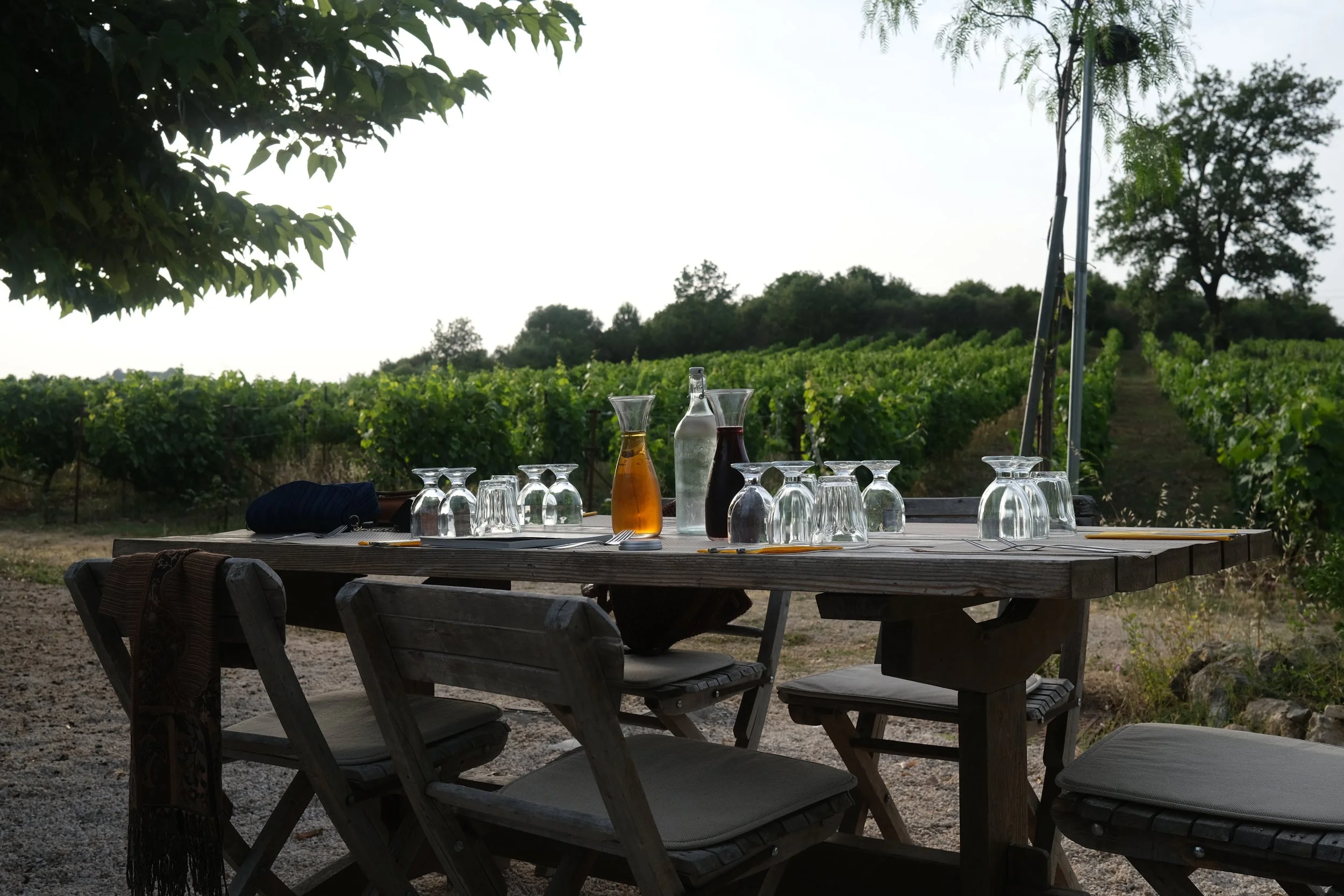
![DSCF2374[1].JPG](https://images.squarespace-cdn.com/content/v1/62ba1dd9c1fb052e32772fa1/1659010406552-DP5RTXONDRZ6O47M9BTH/DSCF2374%5B1%5D.JPG)
